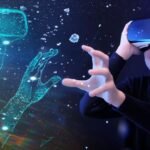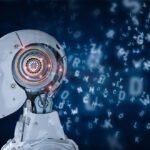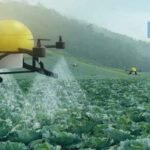How IBM is Advancing AI Once Again & Why it Matters to Your Business
Artificial Intelligence (AI) has emerged as a transformative force, driving innovation and reshaping industries across the globe. As a pioneer in the field, IBM has been at the forefront of AI research and development for decades. Now, IBM is once again advancing the frontiers of AI, and this latest wave of innovation holds significant implications for businesses worldwide. In this blog, we will explore how IBM is pushing the boundaries of AI, the impact it can have on businesses, and why it matters to your organization.
- Quantum AI and Breakthroughs in Computing
IBM’s relentless pursuit of cutting-edge technologies has led to significant breakthroughs in quantum computing. Quantum AI leverages the unique capabilities of quantum computers to solve complex problems exponentially faster than classical computers. This opens up exciting possibilities for businesses in various domains, from optimization and logistics to drug discovery and financial modeling.
By harnessing quantum AI, businesses can accelerate research, improve supply chain efficiency, and explore new avenues for innovation, giving them a competitive advantage in a rapidly evolving landscape.
- AI Explainability and Ethics
As AI systems become more sophisticated, the challenge of understanding their decision-making process becomes paramount. IBM is addressing this concern by developing AI systems with enhanced explainability and transparency.
AI explainability ensures that businesses can understand why an AI system arrived at a specific decision, making it easier to identify biases, errors, and potential risks. This transparency is crucial for industries like healthcare and finance, where AI-based decisions can have significant implications on people’s lives.
- AI-driven Hybrid Cloud Solutions
IBM is at the forefront of integrating AI with hybrid cloud solutions. By combining AI capabilities with cloud technologies, businesses can access vast amounts of data, analyze it in real-time, and make data-driven decisions faster and more efficiently.
With AI-driven hybrid cloud solutions, organizations can optimize workflows, streamline operations, and gain valuable insights into their customers, helping them stay agile and responsive in today’s dynamic business environment.
- AutoAI and Democratization of AI
IBM is empowering businesses with AutoAI, an automated AI development tool that democratizes AI and makes it accessible to a broader audience, even those without extensive technical expertise.
With AutoAI, businesses can rapidly build and deploy AI models, accelerating the time-to-market for new products and services. This democratization of AI fosters a culture of innovation and creativity, driving business growth and empowering individuals at all levels to contribute to AI-driven solutions.
- AI Trust and Security
AI trust and security are critical considerations for any business deploying AI technologies. IBM is committed to ensuring the highest standards of AI trust by embedding privacy and security measures into its AI systems.
By prioritizing AI trust, businesses can have confidence in the reliability and security of AI-driven applications, protecting sensitive data and maintaining customer trust.


































